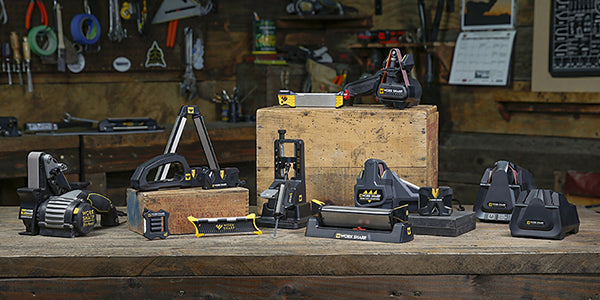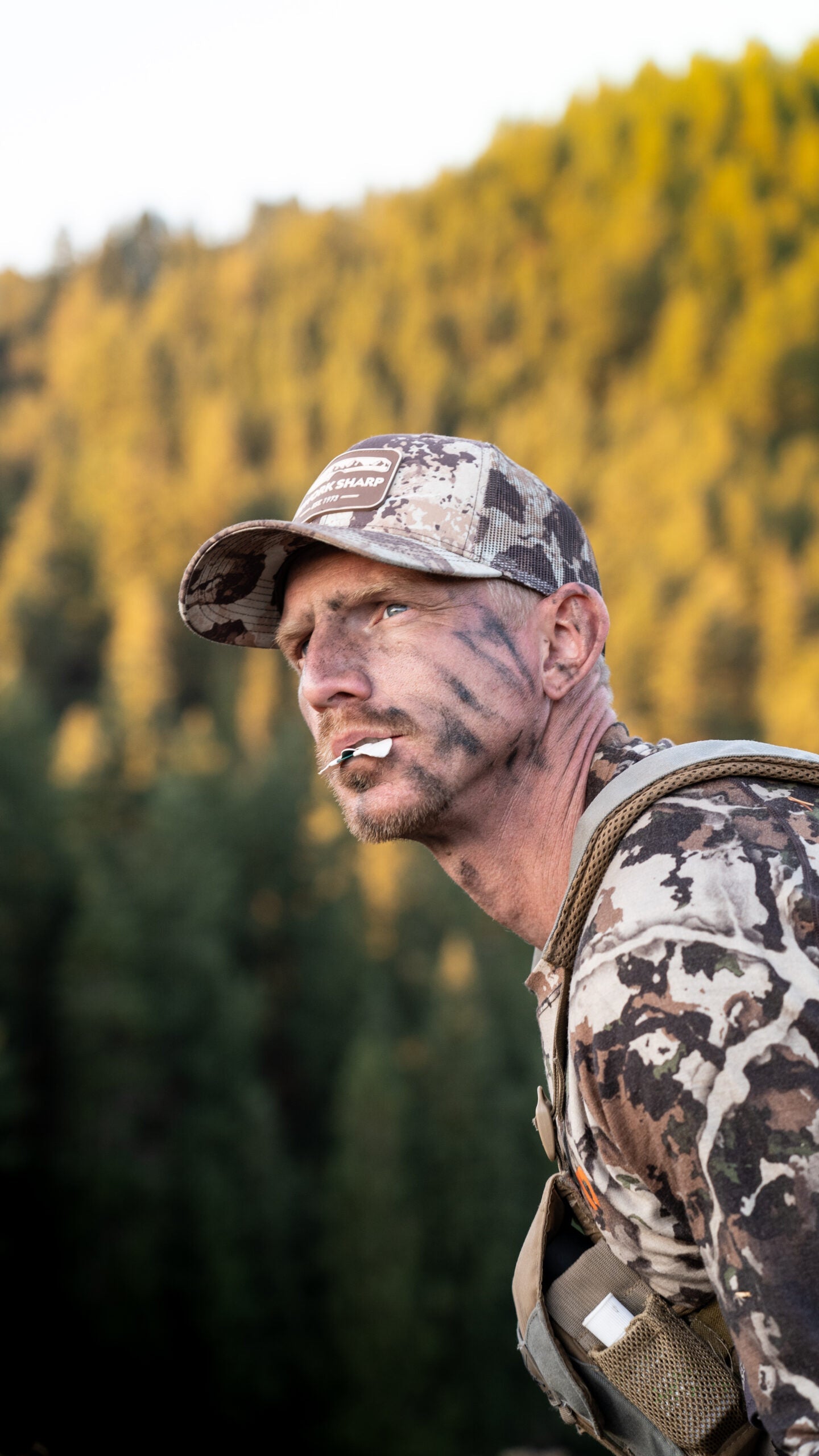"A red bobbing head was moving through the brush and I could see he would be in range within a few seconds. Gobble-obble-obble he sounded off behind the brush. I slid my finger to the safety and clicked it into the firing position. Just a few more steps and he would be mine. Another gobble and some more drumming came from behind the brush cover. My heart raced as he finally stepped into the opening, but was it really him. His head was bright red and he had a nice snood, but I couldn’t see his chest to verify beard length. I had no time to wait as he was about to disappear so I fired. My shot was true and the bird was flopping about crazily as I jumped the creek and blew through the poison oak to step on his neck." - Pro Staffer Troy Rodakowski
Turkeys can be clever creatures and they can put up a good chase when it comes down it. Work Sharp Pro Staffer Troy Rodakowski recently set out for the opening of turkey season, and he came back with tips that will help you look like less of a fool, and more of an expert when hunting wild turkey.

Every spring this feeling and rush of emotion is chased by many turkey hunters across this great country. I have found that no matter how much you think you know about these magnificent birds they always have a trick or two under their wing to prove one wrong. These birds are smart and just when I think that maybe I have them figured out they make me look like a fool. However, I eagerly accept the challenge season after season.
Early April
The opener can be tricky. There have been years when its 29 degrees and snowing and some years when the temps are in the 70’s or higher with mosquitos and ticks trying to latch on as you creep through the woods. Regardless, early in the season birds will be eager to find lonely hens when they are available. Many gobblers will be “henned up,” so to speak. These birds are tough to hunt and present a big challenge for gobbler gunners. When I have found myself in this situation there are a few things I have done to find success. First of all, make sure to make those hens mad. You are going to steal their gorgeous hunk of strut. Mimic a hen and get her fired up. You are the new gal on the block and she doesn’t know you. Chances are Mr. Wonderful will follow her right into range.
Next, make sure to keep an eye on the birds. If you can’t set a dialogue with the hen then wait them out. She will eventually go to nest or feed off. When she does you need to make the best of the situation and intercept the gobbler. He will be looking for another lady once she disappears. Playing your cards right is the key to finding an opportunity at a great bird.
Find new places and isolated meadows where gobblers will set up strut zones and search out hens. These places particularly in mountain regions of the west will be where birds will hang for a great portion of the spring breeding season.
Mid-April
Birds have been likely breeding since late March. Turkeys now are starting to get desperate in finding receptive hens. This is when hunters can take advantage of the conditions. Mid-April is one of the best times to hunt turkey. Gobblers are on the hunt and the breeding is usually at its peak during this time frame. Good calling is essential, but make sure not to overcall. By the third week gobblers become very wary and keeping the calling to a minimum will help. Light yelps and clucks mixed with some purring will likely work best during this time frame. Box and slate calls are also very effective in many instances.
Learning the basic yelp, cluck, purr and some cutting will increase your chances in the woods. Sometimes it is necessary to use a hen and jake decoy to get birds to commit. Of course, other times I have seen birds spook when they see the decoys. Usually, this is the result of heavy hunting pressure. So, make sure to assess every situation before throwing the decoys out of your vest. Try to use, gentle calling when you are able to locate birds especially during the late season. Patterning birds both early and late in the season is essential if you wish to increase your chances. So, make sure to start now.
Late April
This is when it gets fun and very challenging for a hunter. Birds are now wise to calling, decoys and have retreated to places with less pressure. Now is time to search. Hitting ridge tops and yelping loudly or cutting can sometimes entice a gobble. Loud crow call can also get a bird to shock gobble from a long distance.
Often times, I have found myself much closer to a bird then anticipated after making initial contact. Depending on direction, aim to stay upslope above the bird and always make sure to have some clear shooting lanes for approach from every direction. These birds are quite wary and many times will make their way toward you silently and from a direction other than initially anticipated.
Of course, not every set-up is perfect or goes as planned but doing your best to mentally prepare yourself prior to pursuing a bird you can increase your chances. The use of small pine trees, logs, sage brush and rocks will become your best friend for various blind options or backdrops. Sneaking slowly through the woods and using locator calls will be the best bet prior to making contact with a bird.
Be Prepared
During April I have seen it go from sunny and 80 degrees to pouring down rain and hailing within a matter of 45 minutes. There have been mornings that it has snowed, depending on the elevation in which you are hunting. Pack clothing for warm weather hunting as well as cool winter-like conditions. When going on extended morning or afternoon hunts, take an extra under shirt for added warmth, or even to replace a sweated out shirt. Keeping your feet from sweating or getting too cold by bringing a light pair of hiking shoes along with a good insulated pair of boots. A good bottle of bug spray will keep the mosquitoes and ticks off. Most importantly however, is having a sharp knife to clean your turkey. Over the years I have always relied on my Work Sharp products to make sure my knives are the sharpest they can possibly be. I never head to the woods without one in my pack and always sharpen them prior to season. Having these tools will help you in processing your birds throughout the season.
Written by Troy Rodakowski





